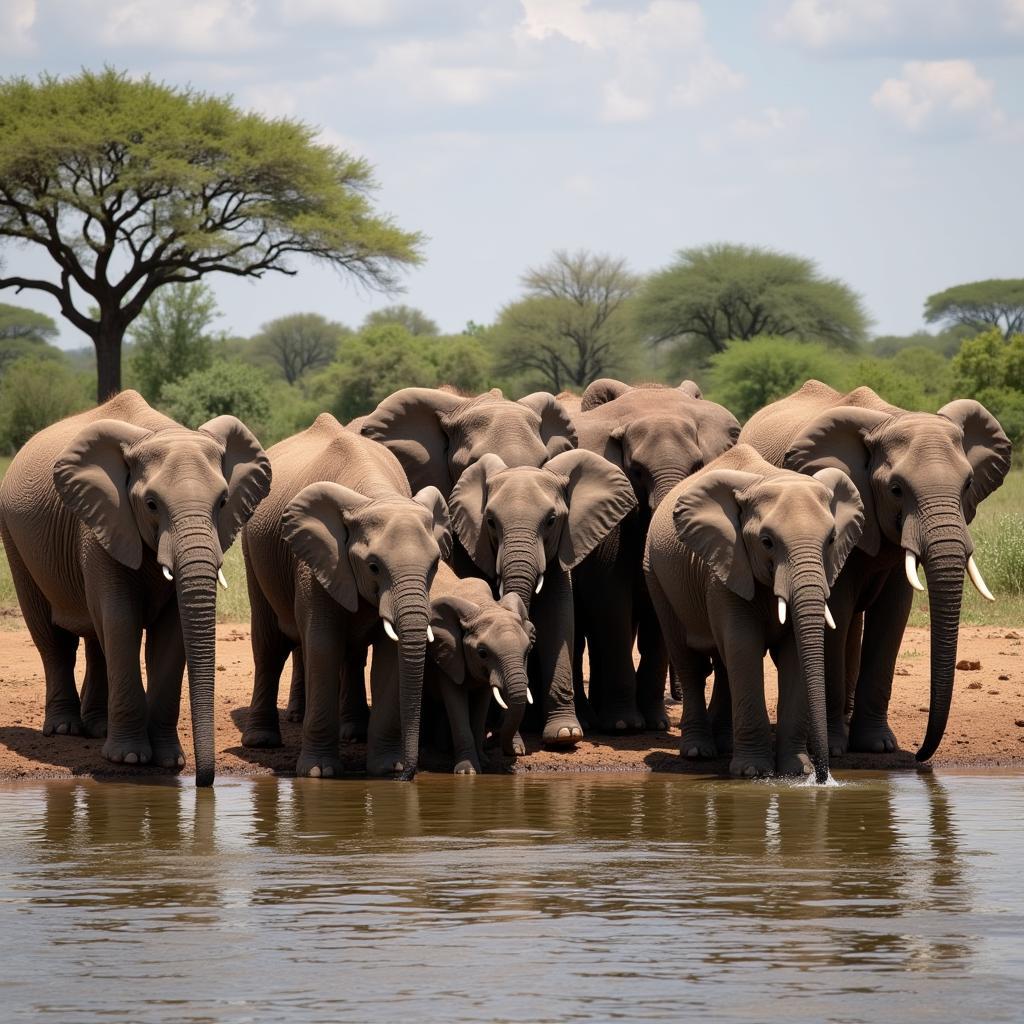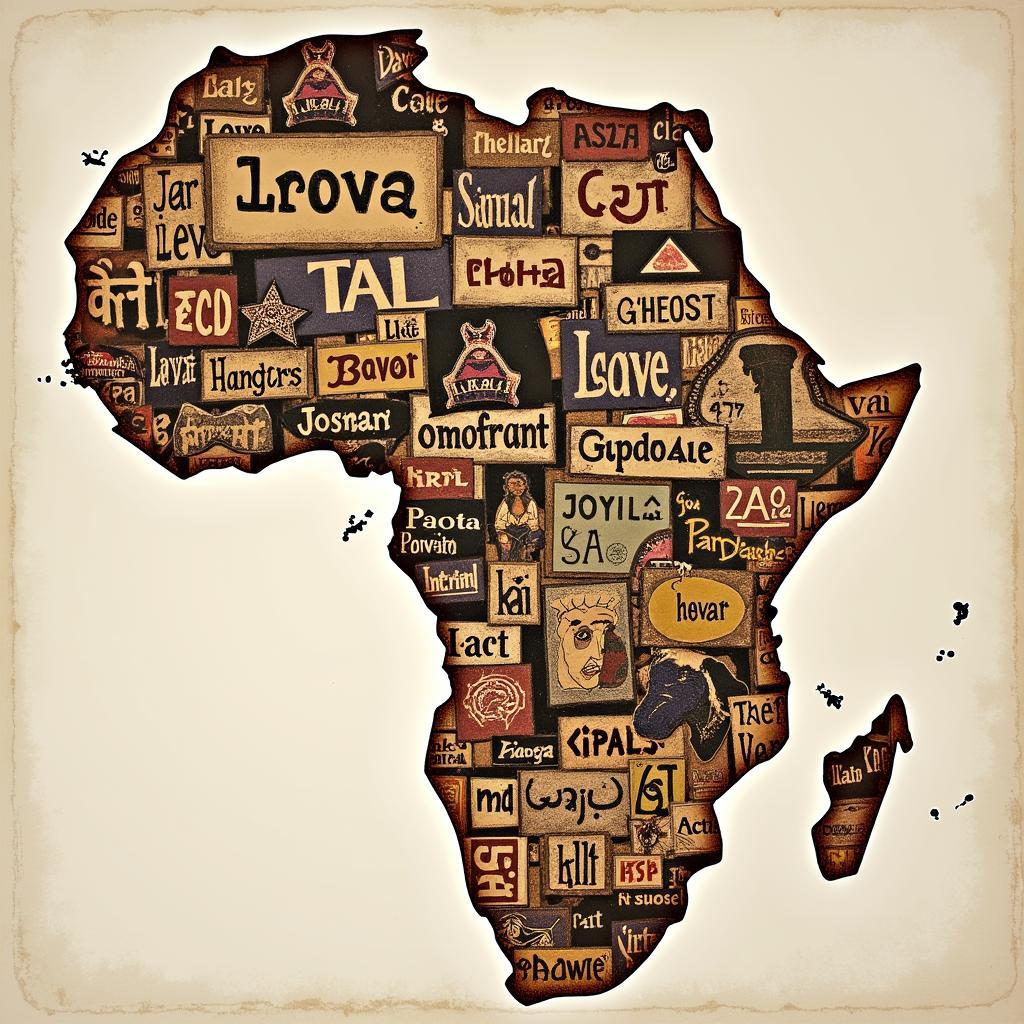Unveiling the Majesty: African Elephant Facts
The African elephant, an iconic symbol of the continent’s wildlife, is a creature of immense power and surprising grace. Far from being just gentle giants, these fascinating animals hold a crucial place in African ecosystems and captivate us with their complex social structures and remarkable intelligence. Let’s delve into the world of African elephants and uncover some intriguing facts about these majestic creatures.
Size and Appearance: The Epitome of Grandeur
African elephants are the largest land mammals on Earth. Their sheer size is awe-inspiring, with males, called bulls, reaching up to 13 feet tall at the shoulder and weighing up to 6,000 kilograms. Females, known as cows, are slightly smaller, typically reaching heights of 8-9 feet and weighing around 3,000 kilograms.
 African Elephant Size Comparison
African Elephant Size Comparison
One of their most distinctive features is their trunk, a fusion of the nose and upper lip. This incredibly versatile appendage, comprised of over 40,000 muscles, serves multiple functions, from breathing and smelling to trumpeting warnings and delicately picking up objects. Their large ears, aside from their remarkable hearing, also play a crucial role in thermoregulation, acting as radiators to dissipate heat.
Two Distinct Species: Forest and Savanna
While often spoken of as a single entity, there are actually two distinct species of African elephants: the African forest elephant and the African savanna elephant. The forest elephant, as its name suggests, inhabits the dense rainforests of Central Africa. They are smaller in size than their savanna counterparts and possess straighter tusks and more rounded ears. Savanna elephants, on the other hand, roam the vast savannas and grasslands of sub-Saharan Africa. They are larger, with more prominent tusks that curve outwards.
Both species play crucial roles in their respective ecosystems, acting as ‘ecosystem engineers’ by shaping their habitats and influencing the distribution of other plant and animal species. Their feeding habits, which involve stripping bark from trees, digging for roots and water, and consuming large amounts of vegetation, help to create clearings in forests and grasslands, promoting biodiversity.
Social Structure: Matriarchal Herds and Family Bonds
African elephants exhibit complex social structures, living in tightly-knit matriarchal herds led by an experienced female, the matriarch. These herds, comprising related females and their young, rely on the matriarch’s wisdom and leadership for survival. She holds a wealth of knowledge, passed down through generations, about migration routes, water sources, and potential dangers.
Within these herds, strong family bonds are evident. Calves, typically born weighing around 100 kilograms, are raised collectively by the females in the herd, with aunts, sisters, and even grandmothers contributing to their care. This allomothering behavior not only ensures the calf’s survival but also fosters strong social ties within the herd.
Communication: A Symphony of Sounds and Gestures
African elephants communicate through an astonishingly diverse repertoire of sounds and gestures. Their deep rumbles, often inaudible to humans, can travel for miles, conveying messages across long distances. Trumpeting calls, on the other hand, are used for alarm, excitement, or to announce their presence.
Beyond vocalizations, these intelligent creatures utilize a range of tactile gestures, including trunk touches, ear flares, and head shakes, to express emotions, strengthen social bonds, and communicate within their herds. These subtle interactions reveal the depth of their social intelligence and the complexity of their communication systems.
Conservation Status: A Fight for Survival
Despite their size and strength, African elephants face numerous threats, primarily from human activities. Habitat loss due to deforestation, agriculture, and human settlements has fragmented their populations and restricted their movements. However, the most significant threat comes from poaching, driven by the illegal ivory trade.
 African Elephants at Watering Hole
African Elephants at Watering Hole
Conservation efforts are crucial to protect these magnificent animals and ensure their long-term survival. Anti-poaching patrols, habitat restoration projects, and community-based conservation initiatives are all essential in addressing these challenges. By raising awareness, supporting conservation organizations, and advocating for stronger protection measures, we can all play a part in securing a future for African elephants.
FAQs: Delving Deeper into the World of African Elephants
How long do African elephants live?
African elephants have an average lifespan of 60-70 years in the wild, although some individuals have been known to live longer.
What do African elephants eat?
African elephants are herbivores, meaning they primarily consume plants. Their diet consists of grasses, leaves, bark, fruits, and roots.
How much water do African elephants drink per day?
On average, an adult African elephant can drink up to 150 liters (40 gallons) of water per day, especially during the dry season.
How do I plan a responsible elephant encounter?
When planning to see elephants in the wild, choose ethical tour operators that prioritize the animals’ well-being and support conservation efforts. Look for tours that observe elephants from a safe distance, minimize disturbance to their natural behavior, and contribute to conservation initiatives.
Where can I find more information about African elephant conservation?
Reputable organizations like the African Wildlife Foundation, Save the Elephants, and the International Fund for Animal Welfare provide valuable information and resources on African elephant conservation.
For further assistance, please don’t hesitate to contact us:
Phone: +255768904061
Email: kaka.mag@gmail.com
Address: Mbarali DC Mawindi, Kangaga, Tanzania
We have a dedicated customer support team available 24/7 to answer your queries and provide any assistance you may need.


